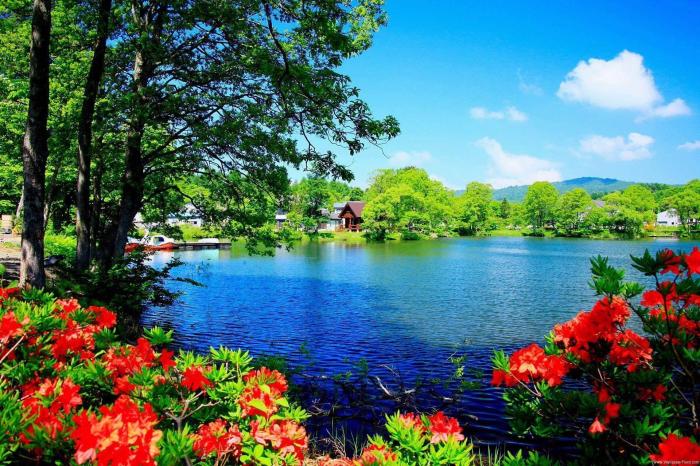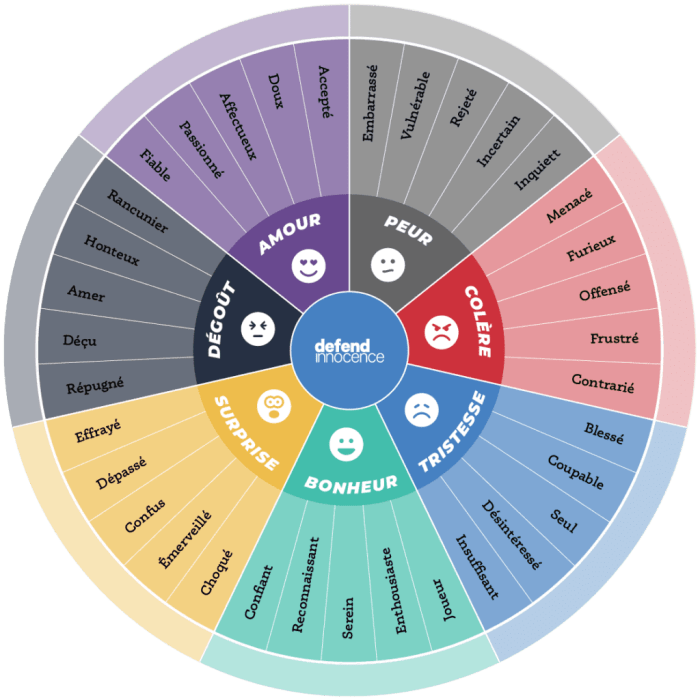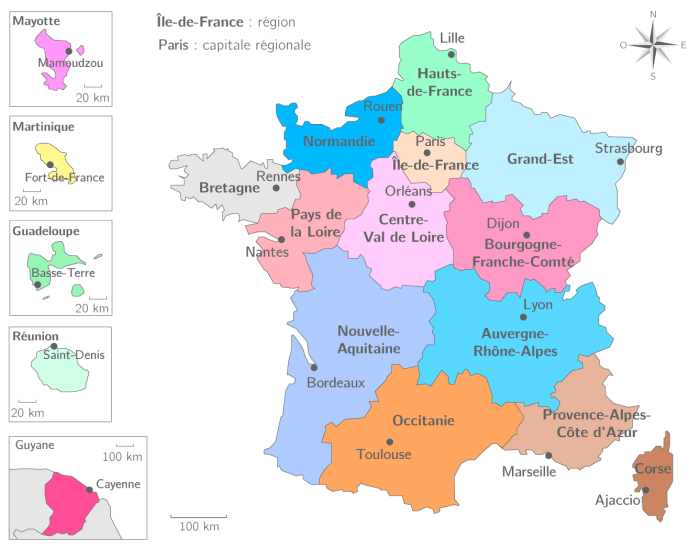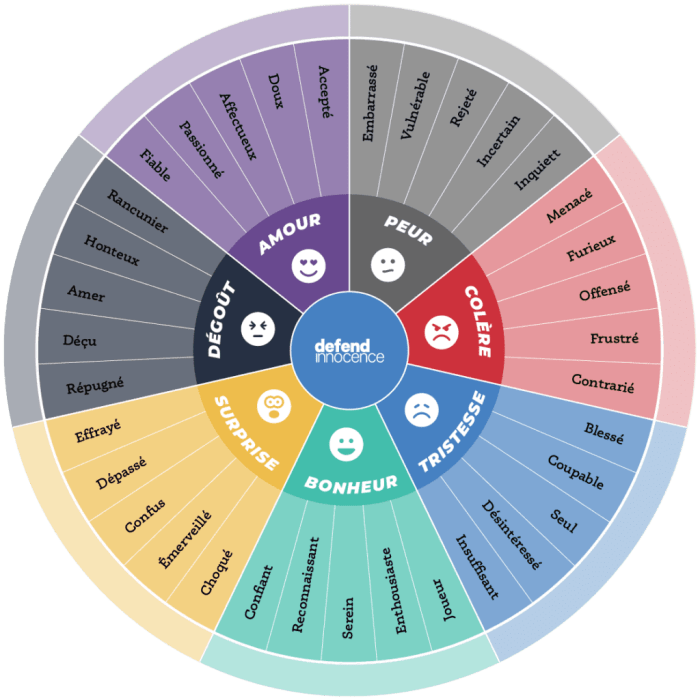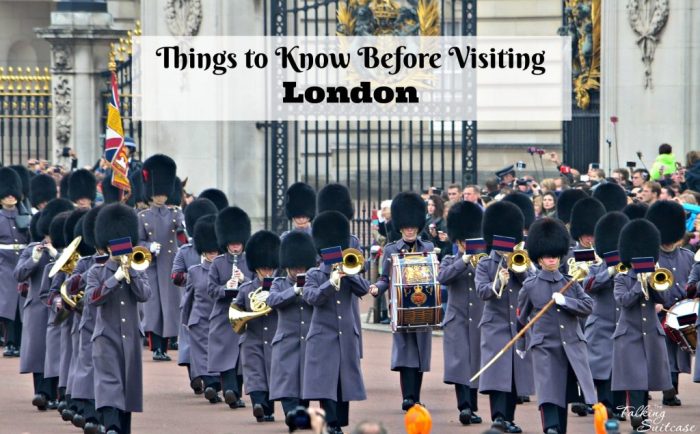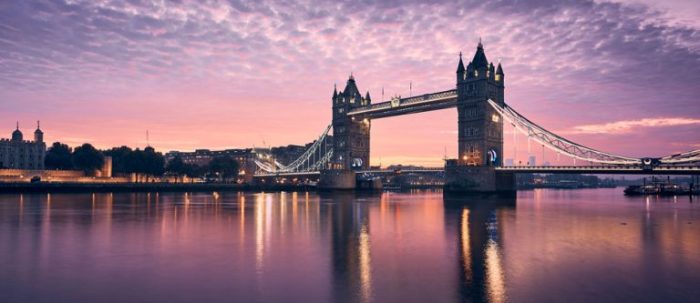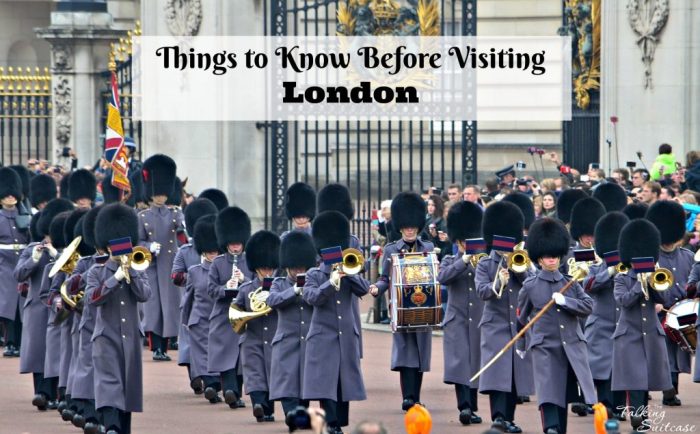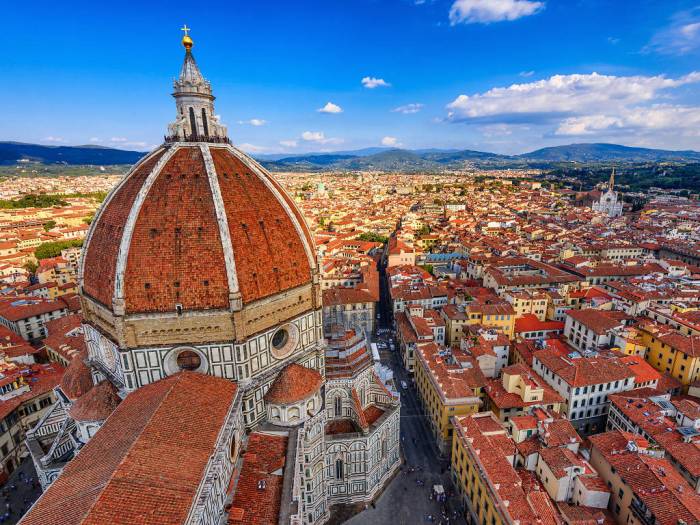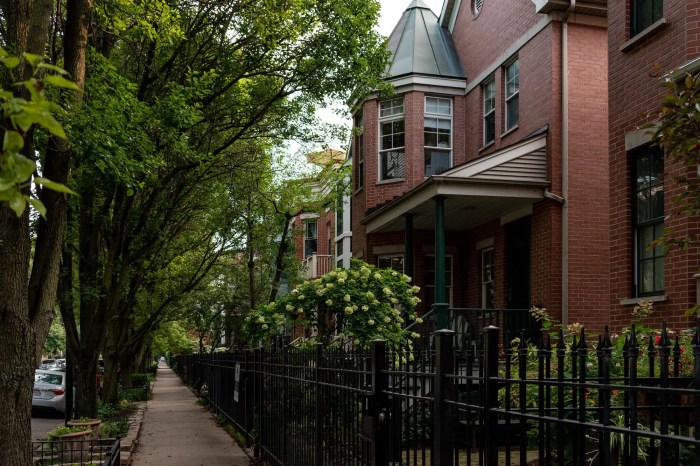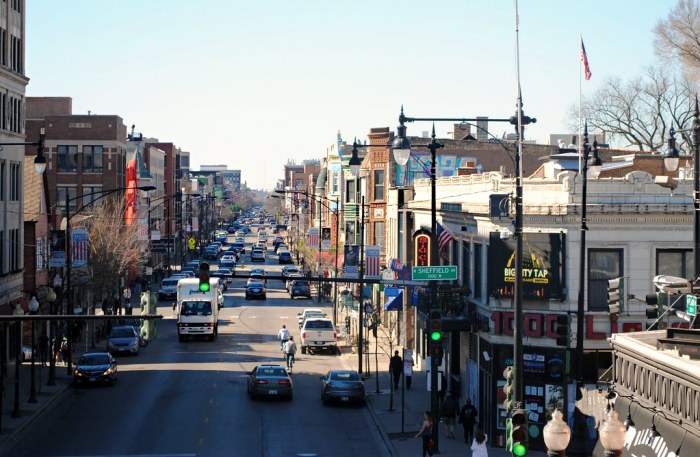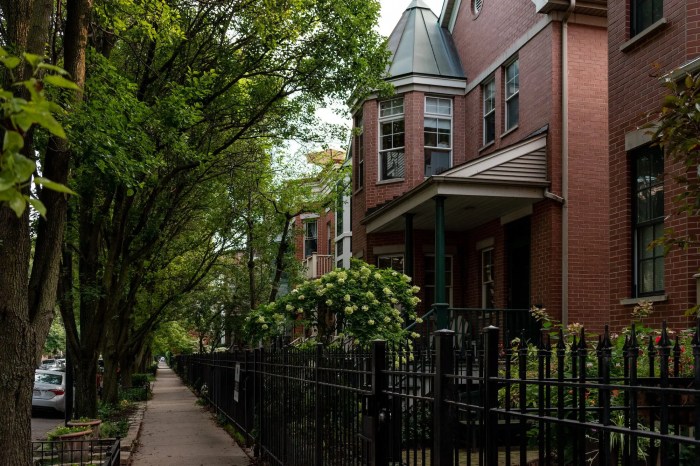Seoul best autumn walks offer a breathtaking escape into vibrant hues and crisp air. Picture yourself strolling through iconic landmarks and hidden gems, enveloped by the captivating beauty of autumn in Seoul. The crisp air, the fiery colors, and the unique atmosphere make this the perfect time to explore the city on foot.
This guide delves into the best walking routes, from bustling city centers to tranquil escapes. Discover popular pathways and hidden gems, along with essential tips for planning your perfect autumn adventure. Learn about local traditions and activities to complete your autumn experience.
Introduction to Seoul Autumn Walks
Autumn in Seoul is a breathtaking spectacle, transforming the city into a vibrant tapestry of color. Crisp air, golden foliage, and a delightful chill in the air make it an ideal time for exploring the city on foot. The transition from summer’s humidity to autumn’s crispness makes for a truly invigorating experience.The weather during Seoul’s autumn season is perfect for outdoor activities.
Temperatures typically range from a comfortable 15-25 degrees Celsius (59-77 degrees Fahrenheit), with clear skies and a refreshing breeze. This ideal temperature range makes for pleasant strolls through parks, along riverside paths, and through the city’s many beautiful streets. The humidity is significantly lower compared to summer, making it easier to enjoy the brisk air and the vibrant scenery.The atmosphere of Seoul during autumn is one of tranquility and beauty.
The city’s iconic landmarks, like Gyeongbokgung Palace, are adorned with vibrant hues of red, orange, and yellow. The air is filled with the gentle rustling of leaves, the aroma of freshly roasted chestnuts, and the cheerful chatter of locals and tourists alike. This peaceful ambiance, coupled with the beautiful scenery, fosters a sense of serenity and enjoyment.Autumn walks hold a special place in Korean culture.
They are seen as a time for reflection, appreciation of nature’s beauty, and bonding with loved ones. The changing colors of the leaves are a symbol of the transition from summer to winter, reminding people of the impermanence of life and the beauty of change. This seasonal transition is celebrated with various cultural activities, such as visiting parks, enjoying autumn festivals, and gathering for family walks.
Typical Autumn Weather in Seoul
The autumn weather in Seoul is characterized by a gradual shift in temperature and humidity. The city experiences a pleasant transition from summer’s warmth to winter’s coolness. The average temperatures in autumn, typically from September to November, make it an ideal time for outdoor activities. Days are usually sunny and pleasant, with clear skies, perfect for exploring the city on foot.
Autumn Scenery in Seoul
The foliage in Seoul during autumn is truly spectacular. The trees, especially those in parks and along the Han River, transform into vibrant displays of red, orange, and yellow. The combination of the city’s architecture with the autumnal colors creates a picturesque scene. This visual feast is a major draw for both locals and tourists.
Autumn Activities in Seoul
Autumn in Seoul offers a multitude of activities for visitors and residents. The changing colors of the leaves provide a breathtaking backdrop for leisurely strolls, photo opportunities, and cultural experiences. Autumn is a time to savor the city’s charm and enjoy a multitude of activities, from visiting historical sites to attending festivals. Many parks and gardens host seasonal events, creating a lively and festive atmosphere.
Cultural Significance of Autumn Walks
Autumn walks in Korea are not just about enjoying the scenery. They hold a significant cultural and spiritual meaning. The changing colors of the leaves symbolize the cycle of life and the impermanence of beauty. This connection to nature promotes a sense of tranquility and reflection. Korean culture often emphasizes the importance of appreciating the natural world, and autumn walks provide an opportunity to connect with that heritage.
Popular Walking Routes

Autumn in Seoul transforms the city into a breathtaking spectacle of vibrant colors. Crisp air and stunning foliage make for perfect opportunities to explore the city on foot. These scenic routes offer a unique perspective on Seoul’s beauty, blending historical sites with natural landscapes.Discovering Seoul’s hidden gems on foot during autumn is a memorable experience. The crisp air and the vibrant colors of the changing leaves provide a stunning backdrop for exploring the city’s many attractions.
Namsan Hanok Village Walk
This charming walk through the traditional Korean houses (hanok) offers a glimpse into Seoul’s rich heritage. The village is nestled amongst beautiful autumn foliage, creating a picturesque scene. The gentle incline and winding paths add to the experience. The walk is approximately 2 kilometers long and can be completed in 1-2 hours, depending on the pace and time spent admiring the sights.
Seoul’s best autumn walks offer stunning views, but for a truly unique experience, consider venturing out to Limmen Bight Marine Park. This hidden gem, nestled amongst the colorful foliage, provides a tranquil escape. The park’s coastal trails offer breathtaking panoramas, perfect for capturing the golden hues of autumn. Ultimately, while there are many options for exploring Seoul’s beauty in autumn, Limmen Bight Marine Park limmen bight marine park is a definite highlight, adding a different dimension to your autumnal exploration.
The village is known for its historic architecture, beautifully maintained gardens, and the panoramic views of the city.
Seoul’s autumn foliage is breathtaking, with vibrant colors painting the city. Exploring the Han River, you’ll discover amazing scenery, perfect for a leisurely stroll. But did you know there’s a fascinating pyramid in Memphis? Learning about its history, as detailed in this article about why is there a pyramid in memphis , adds another layer to your travel adventures.
These autumn walks in Seoul are a must-see for any visitor, offering a unique blend of natural beauty and cultural intrigue.
Bukhansan National Park Autumn Trail
Bukhansan National Park is a popular destination for hikers and nature enthusiasts. In autumn, the park transforms into a vibrant tapestry of colors. Numerous trails cater to different experience levels, from easy strolls to challenging climbs. The variety of trails offers a chance to immerse yourself in nature. Expect a moderate difficulty and 4-6 hours to complete a moderately challenging trail, with a length varying from 5 to 10 kilometers depending on the specific trail chosen.
The park’s unique blend of natural beauty, historical significance, and breathtaking autumn foliage makes it a must-see.
Insadong Walking Tour
This historic district is known for its traditional crafts, tea houses, and stunning architecture. A walk through Insadong during autumn is an excellent way to experience the unique charm of this area. The streets are lined with shops selling traditional crafts, and the air is filled with the scent of autumn. The walk can vary in length from 2 to 5 kilometers, depending on the chosen route, and it takes approximately 2-4 hours.
This route is perfect for shopping, admiring the traditional architecture, and immersing yourself in the local culture.
Olympic Park Stroll
Olympic Park is a large park area with various attractions. In autumn, the park’s extensive green spaces are adorned with beautiful foliage. Visitors can enjoy the scenic trails and the park’s numerous attractions, including the Olympic Park Sculpture Garden and the Seoul National Museum. This walk ranges from 3-5 kilometers and can be completed in 2-3 hours.
The park’s vastness offers ample space for leisurely strolls, making it ideal for families and those looking for a relaxing walk amidst nature.
Table of Popular Walking Routes
| Route Name | Length (approx.) | Key Landmarks | Estimated Time |
|---|---|---|---|
| Namsan Hanok Village Walk | 2 km | Traditional Korean houses, city views | 1-2 hours |
| Bukhansan National Park Autumn Trail | 5-10 km | Natural scenery, historical sites | 4-6 hours |
| Insadong Walking Tour | 2-5 km | Traditional crafts, architecture | 2-4 hours |
| Olympic Park Stroll | 3-5 km | Olympic Park Sculpture Garden, Seoul National Museum | 2-3 hours |
Hidden Gems & Off-the-Beaten-Path Walks
Beyond the popular tourist trails, Seoul’s autumn beauty unfolds in hidden pockets waiting to be discovered. These less-traveled routes offer a unique perspective on the city, allowing you to immerse yourself in its authentic charm and experience the season’s splendor in a more intimate way. Autumn leaves paint a breathtaking panorama across Seoul, and venturing off the beaten path unveils a different kind of magic.Exploring these hidden gems provides a chance to connect with the city’s soul, finding tranquility amidst the bustling urban landscape.
These walks offer a deeper understanding of Seoul, revealing its quieter, more personal side.
Unveiling Seoul’s Hidden Autumn Pathways
These less-known routes often lead to serene landscapes, local markets, or historical sites, allowing you to escape the crowds and truly experience the essence of autumn in Seoul. Discovering these gems enriches the overall autumnal experience, adding a layer of personal discovery and enjoyment.
Hidden Gems in Seoul’s Autumnal Embrace
- Bukhansan National Park’s Western Slopes: This less-crowded section of Bukhansan offers a tranquil escape, with winding paths perfect for leisurely strolls. The vibrant autumn foliage unfolds against a backdrop of towering peaks, creating a breathtaking vista. The gradual slopes and varied terrain provide a suitable hiking experience for individuals of varying fitness levels, making it a welcoming destination for families and individuals alike.
The diverse ecosystem provides ample opportunities for observing the natural beauty of the Korean countryside.
- Olympic Park’s Secret Gardens: Tucked away within the sprawling Olympic Park complex are hidden gardens and serene pathways. These areas often remain less crowded than the park’s main attractions, providing a peaceful escape to admire the autumn hues amidst the lush greenery. These hidden gardens provide a unique contrast to the bustling cityscape, allowing visitors to appreciate the natural beauty that exists in the midst of urban development.
The calm atmosphere and scenic beauty make it an ideal place to relax and unwind during a walk.
- Insadong’s Backstreets: Beyond the well-known shops and galleries, Insadong’s backstreets offer a charming exploration of traditional Korean architecture and local life. These quiet alleys and lanes reveal the city’s cultural heritage and local atmosphere. The warm autumn air, combined with the rich history of the area, creates a special ambiance for strolling. This hidden gem offers a glimpse into the cultural heart of Seoul.
- Namsan Hanok Village: A haven of traditional Korean houses, Namsan Hanok Village presents a unique opportunity to immerse yourself in Korean culture. Autumn’s golden hues paint the historical structures, creating a picturesque scene. The village’s tranquil atmosphere, coupled with the historic significance of the Hanok architecture, makes it a captivating destination. The charming alleys and pathways provide a chance to explore the beauty of traditional Korean architecture while experiencing the serenity of autumn.
Exploring Hidden Gems: Advantages and Attractions
| Route Name | Description | Key Attractions |
|---|---|---|
| Bukhansan Western Slopes | Less crowded section of Bukhansan National Park, winding paths. | Breathtaking autumn foliage, varied terrain, scenic views. |
| Olympic Park’s Secret Gardens | Hidden gardens and pathways within Olympic Park. | Peaceful escape, autumn hues, lush greenery, unique contrast to the city. |
| Insadong’s Backstreets | Hidden alleys and lanes beyond the main shops. | Traditional Korean architecture, local life, cultural heritage, autumn ambiance. |
| Namsan Hanok Village | Traditional Korean houses, immersed in Korean culture. | Picturesque autumn scene, historical significance, tranquil atmosphere. |
Autumn Activities & Experiences: Seoul Best Autumn Walks
Seoul’s autumn offers a vibrant tapestry of activities beyond simply strolling through the picturesque landscapes. From indulging in delicious local treats to immersing yourself in traditional customs, the season provides ample opportunities to experience the heart and soul of the city. This section explores popular autumn activities that enhance your walking experience, allowing you to delve deeper into the cultural nuances of the city.Autumn in Seoul is a time of profound beauty, inviting exploration and a deeper understanding of the local culture.
The crisp air, vibrant foliage, and the unique traditions surrounding the season make it an unforgettable time to visit. The autumnal atmosphere encourages visitors to connect with the local traditions and customs.
Popular Autumn Activities
Autumn in Seoul is not just about walking; it’s about enriching your experience with engaging activities. These complement the walking routes, immersing you in the local culture. Exploring local markets, sampling delectable street food, or visiting traditional tea houses can enhance your understanding and enjoyment of the season.
- Visiting Local Markets: Seoul’s markets are a vibrant hub of activity, particularly in autumn. These bustling marketplaces offer a sensory feast, showcasing the freshest produce, handcrafted goods, and local delicacies. Markets like Gwangjang Market or Namdaemun Market are prime examples of this lively atmosphere, where the aroma of autumnal vegetables and spices fills the air.
- Enjoying Street Food: Autumn in Seoul provides an ideal opportunity to sample the city’s renowned street food. From savory tteokbokki (spicy rice cakes) to sweet hotteok (pancakes), the array of choices is endless. Finding these culinary gems along your walking routes is a delightful part of the experience. Consider trying seasonal specialties like chestnuts or pumpkin-flavored snacks.
- Visiting Tea Houses: Traditional Korean tea houses (cha-sik) offer a serene escape from the bustling city. These establishments provide a chance to relax, sip on aromatic herbal teas, and experience the art of Korean hospitality. Many tea houses serve light refreshments and snacks, allowing you to immerse yourself in the calm ambiance of the season.
- Autumn Festivals: Several festivals celebrating the beauty of autumn are held in Seoul during this time. These events offer unique opportunities to witness traditional performances, sample seasonal treats, and participate in cultural activities.
- Hanok Experiences: Exploring traditional Korean houses (Hanok) provides a unique insight into the architectural and cultural heritage of Korea. Many Hanok offer tea ceremonies or cultural performances during the autumn season. It is a chance to experience a more traditional aspect of the culture.
- Nature Walks in Autumn Parks: Seoul’s parks are transformed into breathtaking landscapes during autumn. Enjoy scenic walks amidst the colorful foliage and capture the vibrant hues of the season. Parks like Olympic Park or Namsan Hanok Village are ideal spots for a tranquil autumn walk.
Local Traditions and Customs
Autumn in Korea is deeply intertwined with traditional customs and beliefs. The changing colors of nature are celebrated and the harvest is a time of gratitude. The reverence for nature and the abundance of the season are deeply ingrained in Korean culture.
- Harvest Festivals: Many Korean communities celebrate harvest festivals, expressing gratitude for the bountiful harvest. These events often feature traditional foods and activities.
- Respect for Nature: Koreans deeply respect nature, and autumn’s beauty is celebrated with reverence. This respect is reflected in the way people appreciate the changing colors and the abundance of the season.
- Autumn Colors and Imagery: Autumn foliage plays a significant role in Korean art, poetry, and daily life. The vibrant hues of the season are seen as a symbol of beauty and change.
Experiencing Local Culture While Walking
Engaging with the local culture while on your autumn walks is key to enriching your experience. Pay attention to local interactions and customs to understand the spirit of the season. Be mindful of local traditions and respect the cultural norms.
- Engage with Local Communities: Engage in conversations with locals. Ask about their favorite autumn activities or traditions. Learning about local customs and experiences enhances your understanding of the season.
- Observe Local Customs: Pay attention to local customs and traditions. Observe how locals celebrate the season and interact with one another. This helps in understanding the cultural nuances of the season.
Finding Restaurants and Cafes Along Walking Routes
Knowing where to find restaurants and cafes along your walking routes is crucial for a seamless experience. Utilize apps like KakaoMap or Naver Map, which provide detailed information about restaurants and cafes near your walking route.
| Walking Route | Recommended Restaurants/Cafes |
|---|---|
| Namsan Hanok Village | Traditional Korean restaurants specializing in seasonal dishes. |
| Insadong | Tea houses and cafes offering traditional Korean snacks and beverages. |
| Bukhansan National Park | Picnic spots with local cafes offering light meals and refreshments. |
Recommendations for Experiencing Local Culture
- Attend a traditional Korean tea ceremony: This is a wonderful way to experience the etiquette and hospitality of the culture. It is an enriching and calming experience.
- Visit a local market and sample seasonal fruits and vegetables: Experience the freshness and vibrant atmosphere of local markets. Engage with vendors and learn about the harvest.
- Participate in a Korean cooking class: Learning to prepare traditional dishes is a way to deeply immerse yourself in the culinary culture of the region.
Essential Information & Tips for Planning
Autumn in Seoul offers breathtaking scenery, perfect for leisurely strolls. Planning your walks effectively ensures a pleasant and safe experience, maximizing your enjoyment of the vibrant colors and crisp air. Understanding the practical aspects, from packing essentials to navigating the city, is crucial for a smooth journey.Knowing what to expect in terms of weather, transportation, and costs will help you tailor your trip and make the most of your time exploring Seoul’s autumnal beauty.
This section provides vital information to help you prepare for your autumnal adventure.
Seoul’s autumn foliage is absolutely stunning, with perfect spots for picturesque walks. Thinking about a luxurious getaway? The JW Marriott Miami Turnberry Resort & Spa is opening soon, offering a completely different kind of autumn experience, and if you are looking for a luxurious retreat, I highly recommend checking out the details on hotels resorts jw marriott miami turnberry resortand spa opening luxury.
But for now, I’m still focused on the best autumn walks in Seoul, where the vibrant colors are truly unforgettable.
Essential Items to Pack
Packing appropriately for an autumn walk in Seoul is key to a comfortable experience. The weather can fluctuate, so versatility in your clothing is important.
- Layers of clothing are crucial. Expect temperature changes throughout the day, and layering allows you to adjust to varying conditions. A light jacket or sweater, a long-sleeved shirt, and a warm base layer will be helpful.
- Comfortable walking shoes are essential for navigating diverse terrains. This will help you maintain energy and prevent discomfort during your explorations. Choose sturdy shoes with good traction, suitable for walking on various surfaces.
- A reusable water bottle is important for staying hydrated throughout your walk. Staying hydrated will ensure your energy levels remain consistent, preventing fatigue.
- A light backpack for carrying essentials like water, snacks, and a small umbrella is useful. A small, lightweight backpack will help you keep your hands free and carry necessary items without impeding your walk.
- A light scarf or shawl is useful for warmth, particularly if you are walking in areas with lower temperatures. It can be used to protect your neck and face from the cold, and it can be taken off or put on as needed.
- A small umbrella or poncho for unexpected showers. Seoul’s autumn weather can be unpredictable, so it’s wise to be prepared for sudden changes in weather conditions.
- A map or navigation app for easy route finding is recommended. A map or navigation app can be very helpful in ensuring that you don’t get lost while navigating through the city.
- A small first-aid kit with essentials like bandages, pain relievers, and any personal medications is recommended. This will ensure you have immediate help if needed.
Safety Precautions
Ensuring your safety is paramount during outdoor activities. Awareness and preparedness can mitigate potential risks.
- Be aware of your surroundings. Pay attention to your surroundings, including traffic, crowds, and potential hazards. Keeping an eye on your surroundings is a good way to avoid accidents.
- Inform someone of your itinerary. Sharing your route and estimated return time with a friend or family member can ensure that someone knows your whereabouts.
- Carry a mobile phone with a charger for emergencies and navigation. Having a mobile phone will allow you to communicate in emergencies or get help if needed. Ensure that the phone is charged before starting your walk.
- Avoid walking alone in poorly lit areas at night. Night walks in less populated or poorly lit areas should be avoided, especially if you are walking alone.
- Be mindful of your belongings. Keep your valuables secure and avoid attracting unwanted attention.
Transportation Options
Seoul offers a robust public transportation system, making it easy to navigate. The public transport system is efficient and provides convenient access to various destinations.
- Subway: The subway is the most efficient way to get around Seoul, connecting most parts of the city. This is a convenient option to get around the city.
- Buses: Buses offer a more flexible approach, allowing access to areas not directly served by the subway. Buses can be useful for reaching specific locations or areas that are not directly served by the subway.
- Taxis: Taxis are readily available and provide direct transport, but can be more expensive than public transportation. Taxis can be useful for quick journeys or when you need to get to a specific destination quickly.
Navigation and Route Planning
Effective navigation is key to a successful walk. Proper planning will help you stay on track and make the most of your time.
- Use a map or navigation app to plan your route. This will help you understand the layout of the area you are visiting and plan your route accordingly.
- Check the accessibility of the routes to ensure they are suitable for your physical capabilities. Ensure that the routes are accessible and appropriate for your physical capabilities.
- Consider the time of day and traffic conditions when planning your route. This will help you adjust your route according to the conditions.
Typical Costs
Autumn walks in Seoul are generally affordable. Costs vary based on your choices and preferences.
- Food and drinks: Costs will vary based on your preferences and dining choices. Snacks and drinks can range from inexpensive to more expensive.
- Transportation: Public transportation is inexpensive and efficient, offering a cost-effective way to navigate the city. Public transport is a cost-effective way to get around the city.
- Entrance fees: Entrance fees to parks or museums can vary and should be factored into your budget. Entrance fees will vary depending on the locations you plan to visit.
Essential Items Checklist
| Item | Description |
|---|---|
| Layers of clothing | Light jacket/sweater, long-sleeved shirt, base layer |
| Comfortable walking shoes | Sturdy shoes with good traction |
| Reusable water bottle | Hydration throughout the walk |
| Light backpack | Carry essentials: water, snacks, umbrella |
| Light scarf/shawl | Added warmth for cooler temperatures |
| Small umbrella/poncho | Unexpected rain or showers |
| Map/navigation app | Easy route finding |
| Small first-aid kit | Bandages, pain relievers, personal medications |
Visualizing the Autumn Walks

Autumn in Seoul is a spectacle of vibrant hues and crisp air, transforming the city into a breathtaking canvas. The crisp, cool air, the rustling leaves, and the subtle fragrances of the season combine to create a unique and unforgettable atmosphere, perfect for exploring the city’s numerous walking trails. These autumn walks offer a sensory journey, painting a vivid picture of the season’s beauty.The city’s landscape undergoes a dramatic transformation, as the trees, from towering maples to delicate ginkgo trees, blaze with a kaleidoscope of reds, oranges, yellows, and golds.
The vibrant colors create a magical atmosphere, inviting you to immerse yourself in the natural beauty surrounding you.
Autumn Scenery and Foliage
The most striking feature of Seoul’s autumn walks is the explosion of color. Crimson maples, with their fiery leaves, stand out against the backdrop of golden ginkgos, their delicate fronds cascading to the ground. The varying shades of yellow, orange, and brown paint a picture of nature’s artistic mastery. This vibrant tapestry of color is not limited to parks and forests, but extends to the city’s streets and alleys, adding a touch of autumnal charm to everyday life.
Sounds and Aromas of Autumn Walks
The crisp air carries the rustling of leaves underfoot, a symphony of nature’s own making. The gentle crunch of fallen leaves beneath your feet adds to the auditory experience. The faint scent of woodsmoke from nearby grills or the earthy aroma of decaying leaves create a unique fragrance, blending seamlessly with the refreshing air. These subtle sounds and smells contribute significantly to the overall ambiance of an autumn walk.
Moods and Feelings
Autumn walks in Seoul evoke a range of emotions. The vibrant colors can inspire feelings of joy and tranquility. The crisp air and rustling leaves can create a sense of peace and serenity, allowing you to disconnect from the daily grind. The subtle aromas can stir feelings of nostalgia and reflection, reminding you of cherished memories. The beauty of nature can be uplifting and inspire creativity.
Photography Opportunities
Seoul’s autumn offers numerous photographic opportunities along its walking routes. The vibrant colors of the foliage create stunning backdrops for portraits and landscape shots. Look for opportunities to capture the interplay of light and shadow on the leaves. The reflections of the autumn colors in still bodies of water can also make for captivating photographs. Finding the right angle, and capturing the essence of the moment, will make for lasting memories.
- Maple Trees: Stunning backdrops for portraits and landscape shots. The interplay of light and shadow on the leaves adds depth to images.
- Ginkgo Trees: The delicate cascading fronds offer a different aesthetic, with the golden hue providing a warm and inviting atmosphere for photographs.
- Autumn Leaves on the Ground: The fallen leaves provide a great opportunity for macro photography. Capturing the intricate details and textures of the leaves adds depth to images.
Comparing Different Autumn Walks
Autumn in Seoul is a breathtaking spectacle, with vibrant foliage transforming the city’s parks and mountains into breathtaking landscapes. Choosing the perfect autumn walk depends on your preferences. Whether you crave a bustling city experience or a tranquil escape, Seoul offers a variety of options. This section compares three distinct walks, highlighting their unique characteristics, difficulties, and ideal visiting times.Comparing different autumn walks allows you to tailor your experience to your interests and preferences.
Consider the atmosphere, the level of exertion, and the desired length of the walk. By understanding the pros and cons of each route, you can make an informed decision and enjoy the best autumnal walk possible.
Namsan Hanok Village Walk
This walk through the charming Namsan Hanok Village offers a glimpse into traditional Korean architecture. The winding paths through the village provide a unique atmosphere, surrounded by the beautiful colors of autumn leaves.
- Atmosphere: Tranquil and picturesque. The village’s traditional architecture creates a serene ambiance, ideal for photography and relaxation. The crisp autumn air adds to the overall charm.
- Difficulty: Easy. The paths are generally flat and well-maintained, making it suitable for all ages and fitness levels. Short strolls through the village can be arranged depending on your preferences.
- Length: Variable. You can choose a short walk through the village, or extend your exploration to nearby areas for a longer experience.
- Best Time to Visit: Mid-to-late October, when the foliage is at its peak. Avoid weekends and public holidays for a less crowded experience.
- Pros: Immersive cultural experience, photo opportunities, relatively easy and enjoyable for all.
- Cons: Can be crowded on weekends, especially during peak season. Limited space for extensive exploration.
Bukhansan National Park Trail
Bukhansan National Park offers a challenging yet rewarding autumn experience. The trails winding through the mountains provide panoramic views of the city and surrounding areas.
- Atmosphere: Adventurous and serene. The park’s natural beauty and varied trails offer a refreshing escape from the city bustle. The fall foliage provides a stunning backdrop to your hike.
- Difficulty: Moderate to challenging. The trails vary in difficulty, from gentle ascents to steep climbs. Choose a trail that suits your fitness level.
- Length: Variable. Numerous trails of varying lengths are available, offering options for short or long hikes.
- Best Time to Visit: Early to mid-October. The foliage is typically at its peak, and the weather is pleasant for outdoor activities. Mid-week visits are recommended to avoid crowds.
- Pros: Stunning views, opportunity for outdoor adventure, opportunity to appreciate the natural beauty.
- Cons: Can be physically demanding. Weather conditions can be unpredictable at higher altitudes. Potential for getting lost if not familiar with the trails.
Olympic Park Autumn Walk
The Olympic Park provides a vibrant city atmosphere with beautiful autumnal colors. The park offers various trails and attractions, allowing for a leisurely stroll or an energetic walk.
- Atmosphere: Lively and vibrant. The park’s modern design and cultural attractions blend with the autumnal beauty, providing a dynamic experience.
- Difficulty: Easy to moderate. The paths are generally flat and accessible. Some areas may have slight inclines.
- Length: Variable. You can choose a short walk around the lake or explore the various attractions within the park.
- Best Time to Visit: Mid-to-late October, when the foliage is at its peak. The park is usually crowded on weekends, so weekdays offer a more relaxed atmosphere.
- Pros: Easy access, variety of activities within the park, pleasant for families and couples.
- Cons: Can be crowded, especially on weekends. The attractions might distract from the pure autumnal experience.
Creating a Sample Itinerary
Planning a 3-day autumn walk in Seoul requires careful consideration of your interests and the city’s diverse offerings. This itinerary provides a framework, allowing you to customize it to your group’s preferences and budget. Whether you’re a nature enthusiast, a history buff, or a foodie, Seoul’s autumn beauty has something to offer everyone.This section Artikels sample itineraries for a 3-day autumn walk in Seoul, including specific routes, activities, and accommodation options.
It also demonstrates how to tailor the itinerary to different group sizes and preferences.
Sample Itinerary 1: The Classic Seoul Explorer
This itinerary balances iconic landmarks with local experiences, perfect for a first-time visitor or a small group.
- Day 1: Historical Seoul & Han River Stroll: Start your day with a visit to Gyeongbokgung Palace, followed by a traditional tea ceremony. Enjoy a delicious Korean lunch at a local restaurant near Insadong. In the afternoon, stroll along the scenic Han River, admiring the autumn foliage. Dinner at a restaurant specializing in Bibimbap. Accommodation: Hotel near Gyeongbokgung Palace.
- Day 2: Bukhansan National Park & Trendy Myeongdong: Hike through the autumn foliage of Bukhansan National Park, a popular escape from the city. Enjoy the picturesque views and crisp autumn air. In the evening, explore the vibrant shopping district of Myeongdong, savoring street food and local treats. Accommodation: Guesthouse near Bukhansan National Park or a Hotel near Myeongdong for ease of access to shopping.
- Day 3: Namsan Mountain & Departure: Ascend Namsan Mountain for panoramic city views. Visit the N Seoul Tower and enjoy the autumn colors. Enjoy a final Korean meal at a restaurant near your accommodation before departing. Accommodation: Same as Day 2.
Sample Itinerary 2: The Foodie’s Delight
This itinerary focuses on Seoul’s culinary scene, perfect for food lovers or groups interested in experiencing local cuisine.
- Day 1: Insadong & Culinary Delights: Immerse yourself in the charming streets of Insadong, exploring its traditional shops and art galleries. Have lunch at a restaurant specializing in Korean BBQ. In the afternoon, indulge in a Korean cooking class to learn the art of preparing your favorite dishes. Dinner at a restaurant near Insadong known for its exquisite seasonal dishes. Accommodation: Guesthouse or Boutique Hotel near Insadong.
- Day 2: Gangnam & Street Food Adventures: Explore the upscale Gangnam district, known for its fashion and entertainment. Enjoy a lunch of delicious street food from the numerous stalls in the area. In the afternoon, take a guided food tour to discover hidden culinary gems and local eateries. Dinner at a restaurant specializing in Korean street food. Accommodation: Hotel near Gangnam Station.
- Day 3: Market Exploration & Departure: Visit a local market, such as the Namdaemun Market, to experience the bustling atmosphere and purchase souvenirs. Enjoy a final Korean meal at a restaurant near your accommodation before departing. Accommodation: Same as Day 2.
Tailoring Itineraries
Adjusting these sample itineraries for different group sizes and preferences is straightforward. For larger groups, consider booking multiple rooms in hotels or guesthouses near the walking routes. If your group prefers a more relaxed pace, you can shorten the walking routes or add more time for relaxation and sightseeing. For couples or small groups, opt for cozy guesthouses or hotels with shared spaces.
Interests in history, nature, or shopping can be integrated into either itinerary by replacing certain activities.
Accommodation Options, Seoul best autumn walks
- Hotels: Numerous hotels near Gyeongbokgung Palace, Bukhansan National Park, and Myeongdong offer various amenities and price ranges. These provide a comfortable and convenient stay. Examples include the Lotte Hotel, The Shilla Hotel, and various other boutique hotels.
- Guesthouses: For a more budget-friendly option or a unique experience, consider guesthouses. These often offer a local feel and are located near popular walking routes. Examples include local guesthouses near the areas Artikeld in the sample itineraries.
Closing Notes
Embark on unforgettable autumn walks in Seoul, immersing yourself in the vibrant colors and unique charm of the city. From iconic landmarks to hidden gems, there’s a walk perfect for every traveler. This guide provides a comprehensive overview, enabling you to plan a memorable fall adventure. Pack your walking shoes, and prepare to be captivated by the magic of Seoul’s autumn season.




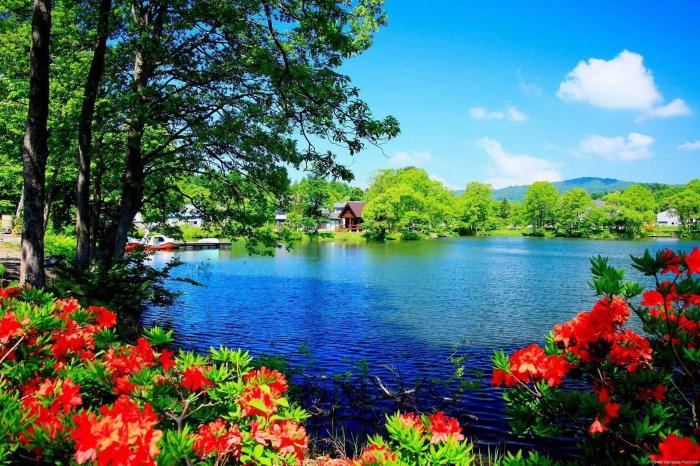
![[100+] Nature Landscape Pictures | Wallpapers.com Trip ideas nature travel places to see cherry blossoms washington](https://travelingtours.info/wp-content/uploads/2025/06/NRyGuz1-1.jpg)
